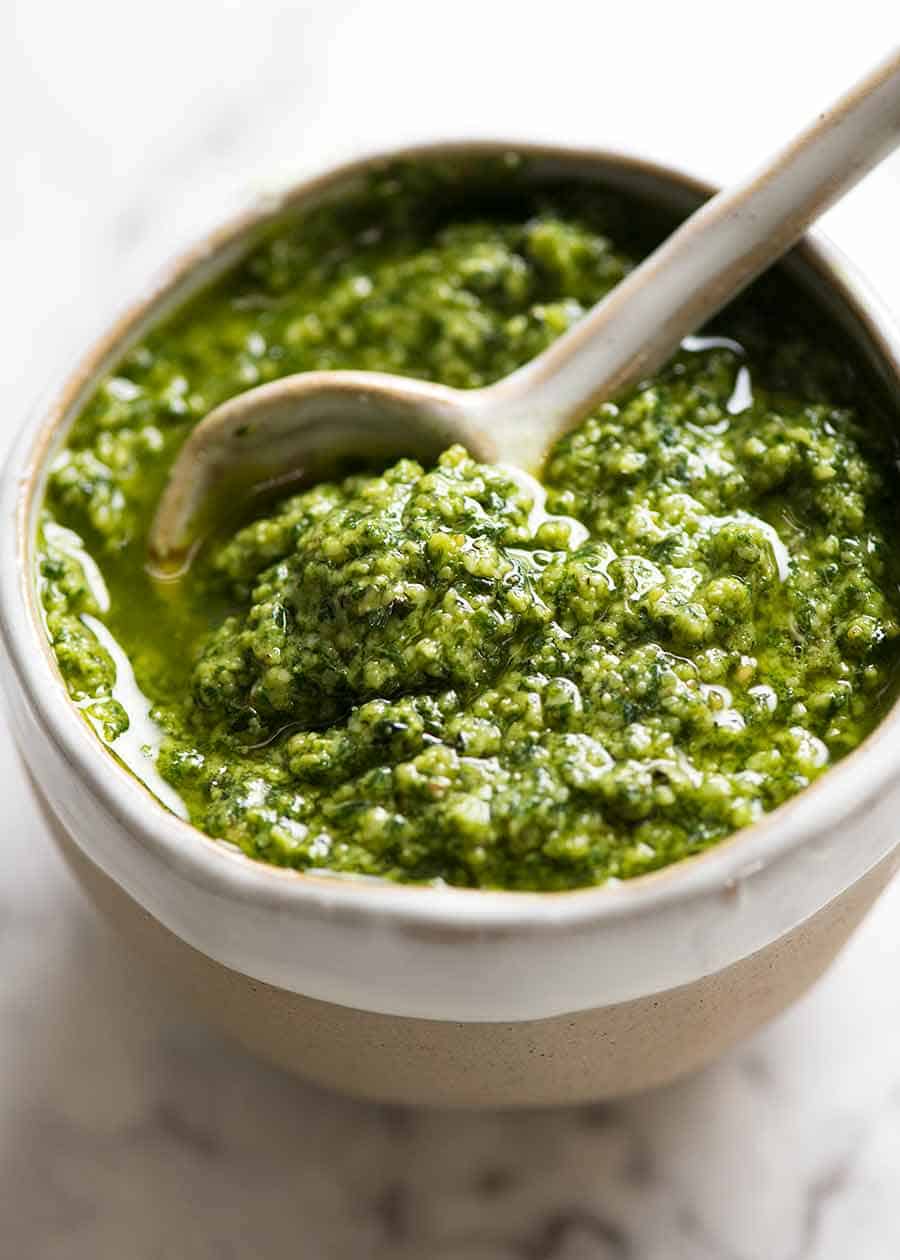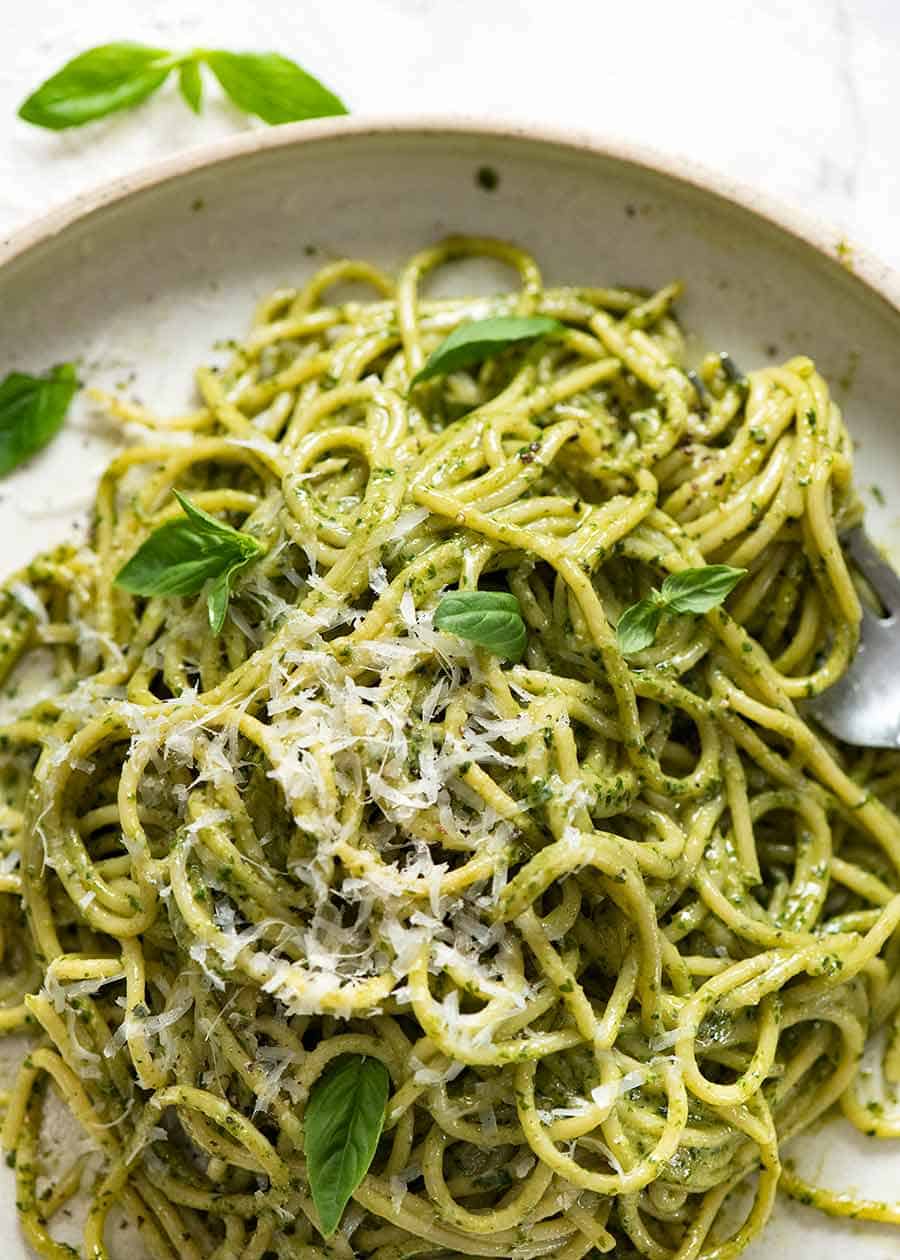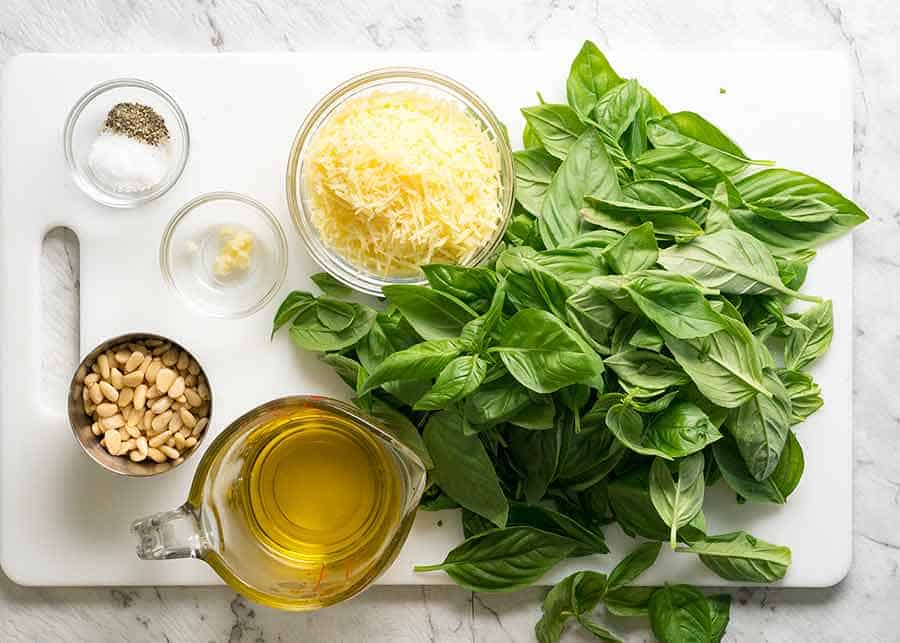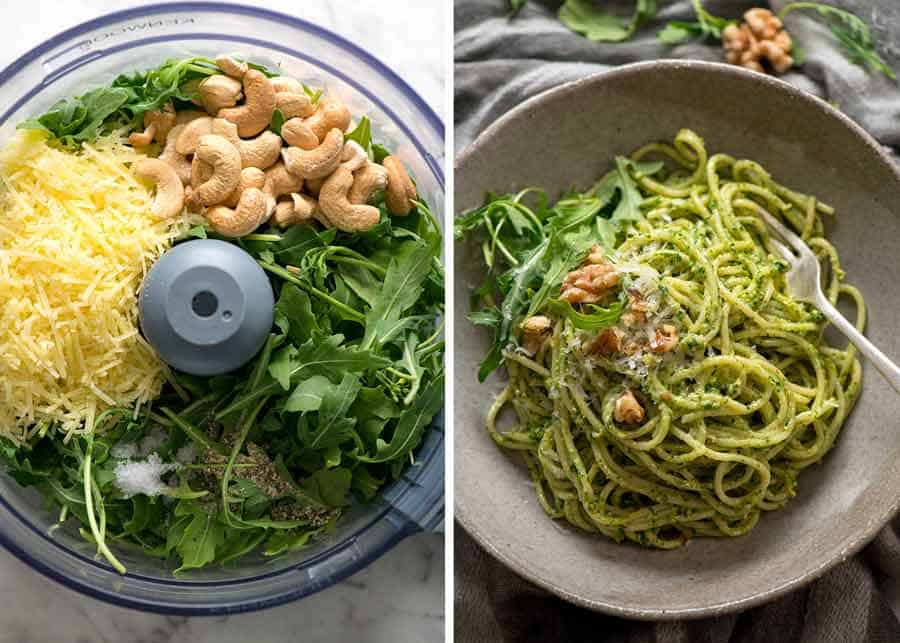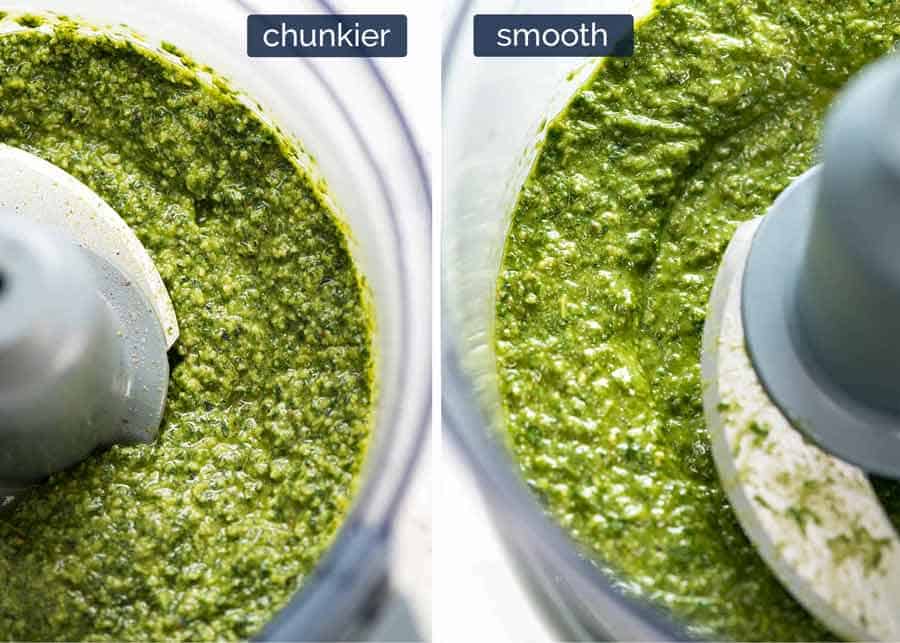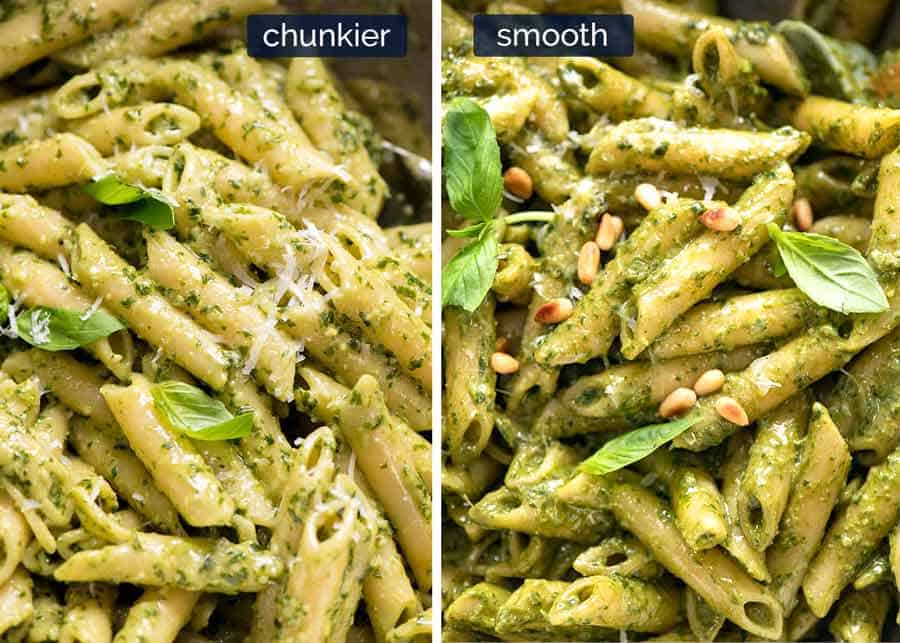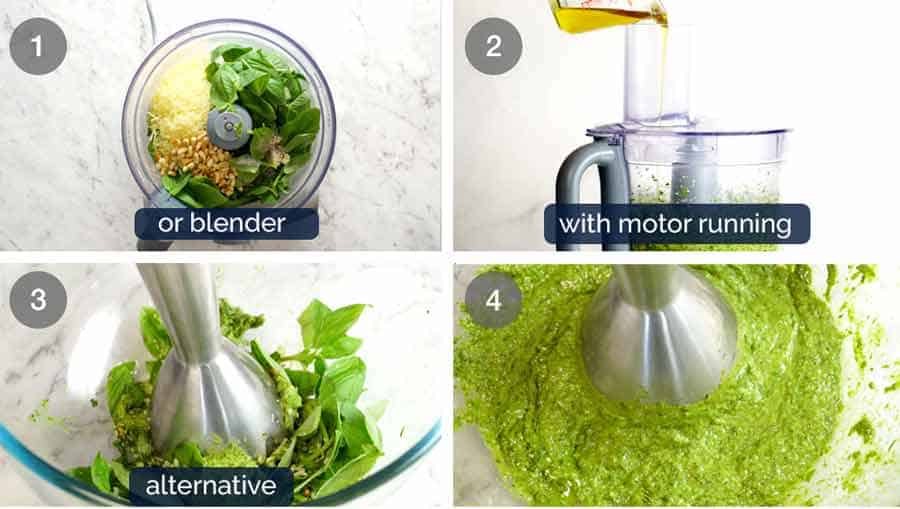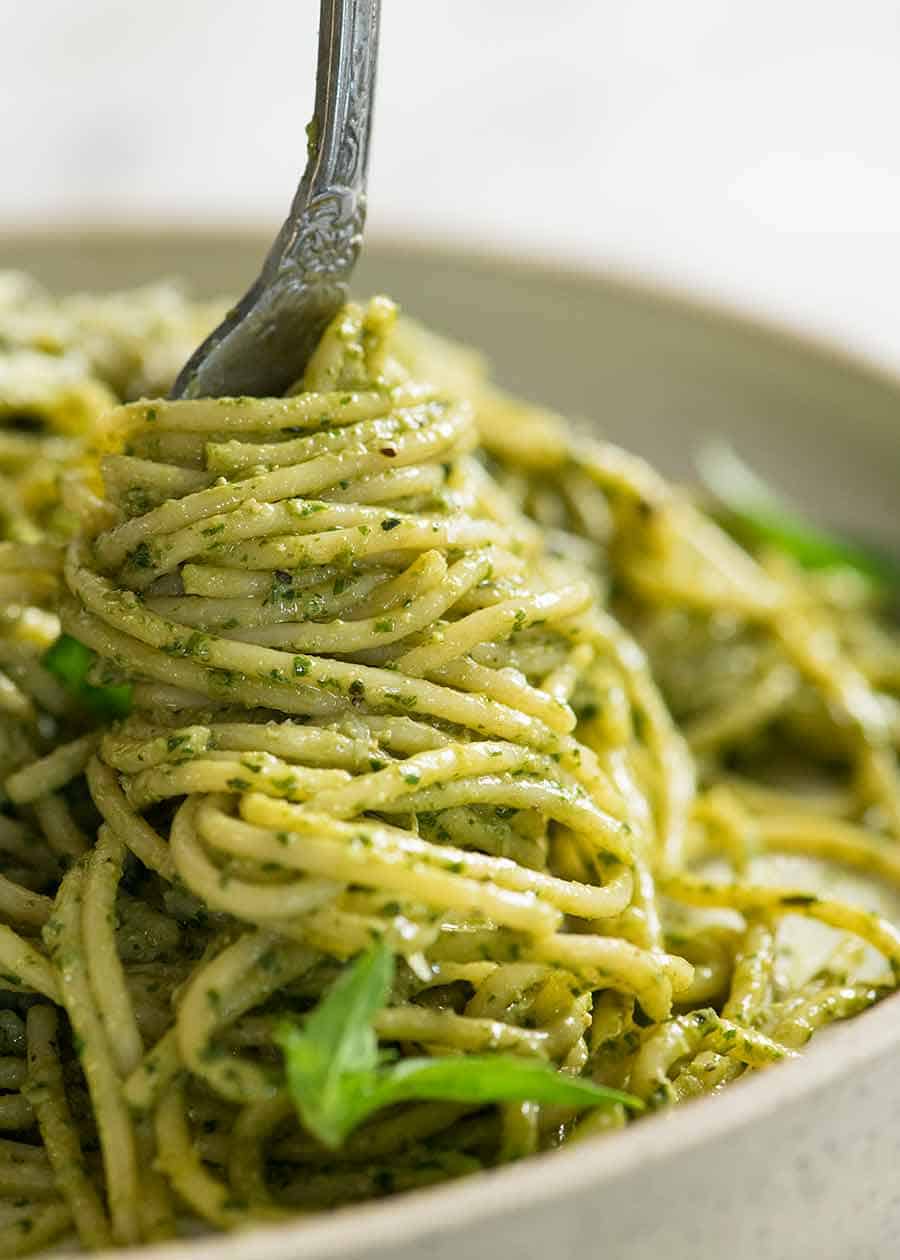Homemade pesto will last for 3 days in the fridge, or months in the freezer. Make a pesto pasta, use for pasta salad, spread it on toast, use as a dip and dollop on everything!
There is no greater purpose for a big bunch of fresh basil than to make a homemade classic Italian pesto, and it’s negligent of me to have not shared my “formula” until now! While basil is the classic version, there’s a wide variety of combinations available and I use the same recipe for all variations:
My pesto formula
2 cups basil – or other (tasty) blitzable leafy greens 1/4 cup pinenuts – or other nuts (chopped). Cashews are the best (better value!) sub for a basil pesto. 1/2 cup parmesan, store bought shredded OR 3/4 cup freshly grated parmesan* 6 tbsp extra virgin olive oil – a really good quality one makes all the difference here! 1 garlic clove Salt and pepper
Combine and blitz – that’s it!
- Why the difference between store bought and freshly grated? Because freshly grated is aerated so you need more by volume for the same amount by weight.
Pesto variations
Here are some terrific combinations I’ve tried over the years. Use the same Pesto Formula above.
Basil and pinenuts – the classic Basil with cashews – a popular dip combination sold in Australia Rocket/arugula or baby spinach – with pinenuts, walnuts, almonds or cashews Kale or silverbeet – with pinenuts, almonds or cashews (I find walnuts too bitter with kale) Parsley – with pinenuts, walnuts, almonds or cashews Add a bit of coriander/cilantro to any of the above (only using coriander is too strong, I find)
Pictured below is rocket/arugula with cashews (left) and walnuts (right).
Chunky or smooth?
Pesto can be a bit on the chunky side, or almost like a uniform green paste. It really comes down to personal preferences or what you’re using it for, but smoother pesto yields a better flavour and greener colour throughout whatever you toss it through. Here’s a comparison of how pasta looks with chunky vs smooth. To be honest, I prefer the look of the chunky because I like the little green bits, but the flavour of the smoother one is way better.
How I blitz pesto to make it really smooth
There’s 2 things that will help you get a really smooth pesto:
- Ensuring there’s enough liquid to help it blitz. You’d think using the same recipe every time would mean constant results, but it doesn’t – because basil leaves can vary in how much water they hold. (Also, sneaking in extra parmesan doesn’t help!). So if you’re having trouble getting a smooth pesto, just add more liquid – oil, a touch of water or lemon juice (if you’re planning to use it for a pasta salad or you like a touch of tang in your hot pesto pasta)
- The blitzing vehicle – Guess what, not all food processors are created equal! If yours isn’t powerful enough to make a really smooth pesto with 1 minute of blitzing, then give up, it’s not going to happen. Instead, use a blender (you need to be diligent scraping it all out!), a Nutri-bullet (or spice grinder or similar) OR use a stick blender in a bowl. This stick blender works exceptionally well! Watch the video and you’ll see.
Pesto uses
So much more than just pasta!! I’ve separated them between when I use smoother pesto and chunkier pesto.
Smoother pesto Pesto pasta Stirred through risotto or a creamy orzo Pasta Salads Salad dressings Spreading on toast, crostinis Chunkier pesto Dip (like the store bought ones) For dolloping on things – cooked proteins, roasted vegetables, steak Potato salads Making a dressing (add vinegar/lemon and shake/stir)
See the separate post I shared today for how to make a JUICY pesto pasta. Don’t just keep adding more and more oil, it makes it way to rich! – Nagi x
Pesto pasta Stirred through risotto or a creamy orzo Pasta Salads Salad dressings Spreading on toast, crostinis
Dip (like the store bought ones) For dolloping on things – cooked proteins, roasted vegetables, steak Potato salads Making a dressing (add vinegar/lemon and shake/stir)
Basil pesto recipe
Watch how to make it
Life of Dozer
Curls or a straighten today? Or just a general hair puff up?
